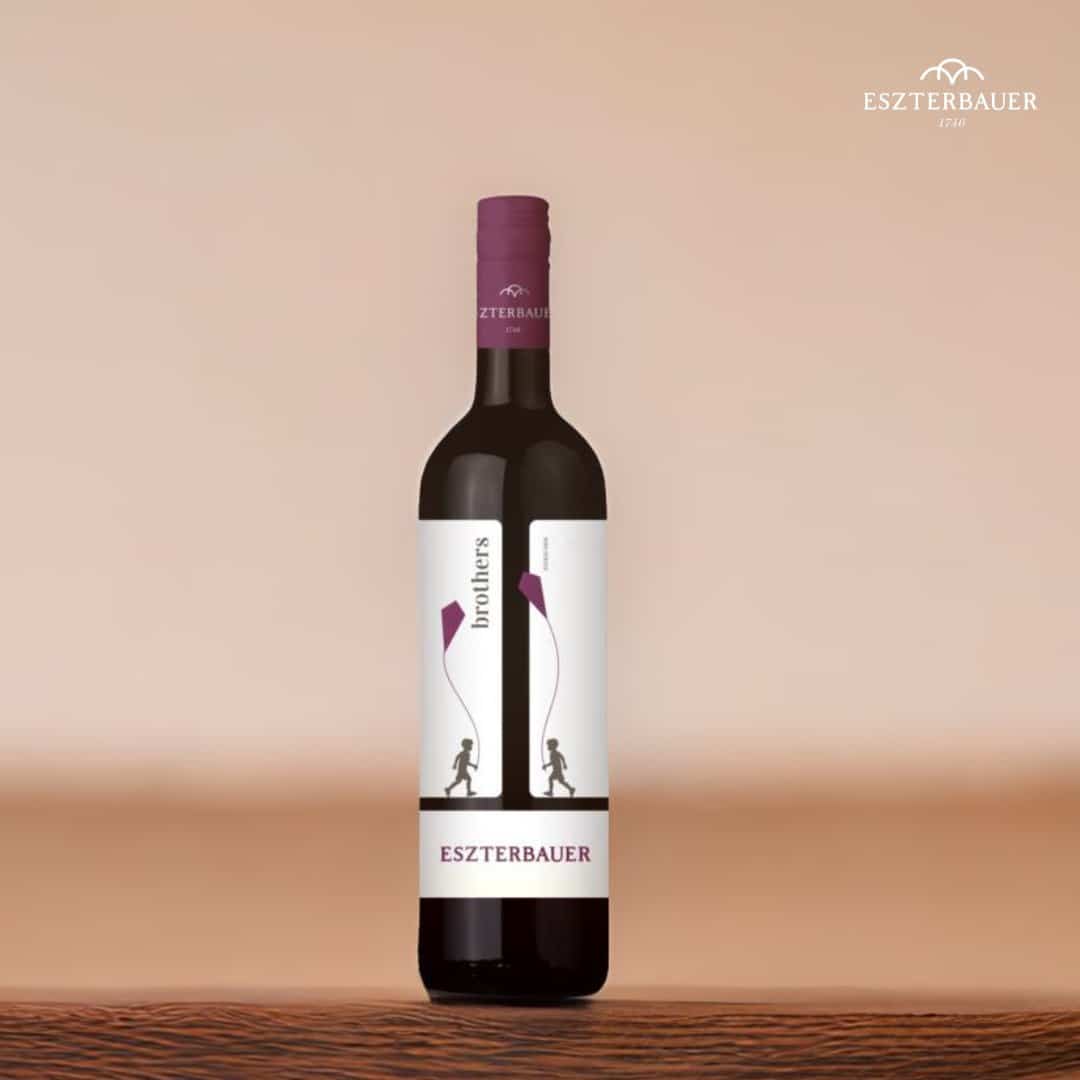
Szekszárdi Bikavér regulation
From vintage 2017
– The original, Hungarian version is available here.
– The original document was submitted by Szekszárd Council of Wine Communities.
– The translation was done by Hungarianwines.eu.
– The text is edited to a small extent by Hungarianwines.eu
– The below written regulation is an excerpt from the whole Szekszárd regulation focusing exclusively on Szekszárdi Bikavér.
Analytic regulations for the two levels of Szekszárdi Bikavér
Type of wine Alcohol Acidity Maximum volatile acidity
Bikavér Min.: 12.08% 4.6–10 g/l 1.2 g/l
Prémium Bikavér Min.: 12.08% 4.6–10 g/l 1.2 g/l
Organoleptic characteristics
Bikavér
Dark shade of garnet and ruby. Ripened black fruits and notes from barrel ageing on the nose. Pronounced but balanced acidity and elegant palate of ripeness.
Prémium Bikavér
Deeper garnet colour. Complex and layered nose, full body with structure and richness of flavours. The wine is not dominated by tannins, however it has velvety texture and elegance.
Vinification – mandatory elements
Bikavér
– It is obligatory to use a press of intermittent operation.
– The wine has to be aged in wooden barrel for a minimum of one year.
– The wine must not be dominated by notes of barrique ageing.
– The wine should be a blend of at least 4 grape varieties with the following restrictions:
– Kékfrankos has to represent a minimum of 45% of the released product.
– Kadarka has to represent a minimum of 5% of the released product.
– The other permitted varieties of the blend: Cabernet Sauvignon, Cabernet Franc and Merlot.
– The wines of the following varieties are also permitted, but they are allowed to contribute to the blend with a maximum of 10% altogether: Blauburger, Kékoportó, Menoire, Pinot noir, Syrah, Zweigelt, Bíborkadarka, Alibernet, Turán, Tannat, Sagrantino, Malbec, Mészi kadar.
It is forbidden to sweeten the wine.
Vinification – mandatory elements
Prémium Bikavér
– It is obligatory to use a press of intermittent operation.
– The wine has to be aged in wooden barrel for a minimum of one year.
– The wine must not be dominated by notes of barrique ageing.
– The wine cannot be released to the market prior to the 31st December of the following year to the harvest.
– The wine should be a blend of at least 4 grape varieties with the following restrictions:
– Kékfrankos has to represent a minimum of 45% of the released product.
– Kadarka has to represent a minimum of 5% of the released product.
– The other permitted varieties of the blend: Cabernet Sauvignon, Cabernet Franc and Merlot.
– The wines of the following varieties are also permitted, but they are allowed to contribute to the blend with a maximum of 10% altogether: Malbec, Pinot Noir, Syrah and Sagrantino, Tannat.
It is forbidden to increase the quality of the must and to sweeten the wine.
Regulations of viticulture (for all Szekszárd plantations)
For vineyards planted after 31st July, 2009
– The number of slots for vines cannot be lower than 3300 / hectare.
– The distance between the row of vines has to be minimum 1 meter and maximum 3.4 meters.
– The distance between the vines has to be minimum 0.6 meter and maximum 1.2 meters.
– Training systems permitted: bush, head training system, low and medium cordon, umbrella, sylvoz, guyot.
For vineyards planted before 31st July, 2009
Grape for a Szekszárd wine can be harvested from any type of vineyard with any density – in case it was planted according to the actual regulation of the time of plantation.
The minimum natural sugar level of the grape
Bikavér
Blauburger, Cabernet Franc, Cabernet Sauvignon, Kékoportó, Kékfrankos, Menoire, Merlot, Pinot Noir, Syrah, Zweigelt, Bíborkadarka, Alibernet, Turán, Tannat, Sagrantino, Malbec, Mészi Kadarka: 12,08 %vol 204,5 g/liter 19 MM
Prémium Bikavér
– Cabernet Franc, Cabernet Sauvignon, Syrah: 13,59% vol 230,2 g/liter 21 MM
– Kadarka: 12,08% vol 204,5 g/liter 19 MM
– Kékfrankos, Merlot, Sagrantino, Tannat, Malbec, Pinot Noir: 12,83% vol 217,3 g/liter 20 MM
Harvest
Manual or machine harvest
Maximum yield
Bikavér
100 hl/ha for primer wine on the lees and maximum 140 q/ha
Prémium Bikavér
60 hl/ha for primer wine on the lees and maximum 80 q/ha
Rules for labeling
Here only the specific regulations of Bikavér labeling are mentioned.
– The figure of a bull, a bull’s head or any other shape reminiscent of the bull is allowed to be used on the label of a Szekszárdi Bikavér.
– The word Bikavér cannot be mentioned on the label in any other languages, neither words or expressions in Hungarian if they are only similar to Bikavér or synonyms.
– Barrique, barrique aged or barrel aged (‘hordóban érlelt’) terms are allowed on the label of a Bikavér.
Szekszárd wine region official communities
Szekszárd wine region consists of the 1st and 2nd class vineyards of the following communities:
Alsónána, Alsónyék, Báta, Bátaszék, Decs, Harc, Kéty, Kakasd, Medina, Őcsény, Sióagárd, Szálka, Szekszárd, Várdomb, Zomba
Communities and their vineyards
Communities are allowed to be mentioned on the labels if 85% of the grape for the given wine comes from the vineyard community. Vineyards are allowed to be mentioned on the labels if 95% of the grape for the given wine comes from the mentioned vineyard.
| Name of the vineyard | |
| Báta | Cenege, Cserhát, Borzás, Somos, Rigóvár, Szénás, Vakszer, Szilos, Csóka- hegy, Bödei-hegy, Látó-hegy |
| Bátaszék | Rác-hegy, Diós-völgy, Sváb-hegy, Lajvéri-szőlők, Szenta-hegy, Leperd, Nagy- Oros, Kis-Oros, Szentai-hegyhát, Orbán-hegy, Felső-Martinca, Martinca, Közép-hegy, Farkasdi-hegyhát, Farkasd |
| Alsónyék | Bazsó-hegy, Belső-Szeles, Gubac-hegy, Kerek-hegy, Kesztőc, Mórágyi-dűlő, Nyéki-hegy (Felső-hegy, Közép-hegy, Nagy-hegy), Szeles-hát |
| Alsónána | Első-völgy (Erstestal), Erdei-földek (Waldfeld), Felső-Malidol, Kesztőc, Közép- tető (Mittelkopp), Kürtös-hegy (Kortas), Szarvas-tető, Luk (Loch), Malidol, Réz-hegy (Riessberg), Szabad-földek (Freisticker), Várdombi-magaslat (Várdomberhähe) Wiesesticke |
| Várdomb | Bazsó-hegy, Hitteweingarten, Józan, Közép-hegy, Nánai-magaslat, Pilisi- hegy, Temetői-szőlők |
| Szekszárd | Agárdi-völgy, Almás, Bagó-völgy, Bakta, Balparászta, Balremete, Baranya-
völgy, Batti kereszt, Bence-völgy, Bodzás, Bödő, Cinka, Cserhát, Csötönyi- völgy, Ebes, Előhegy, Faluhely, Fuchs-völgy, Gesztenyés, Görögszó, Gurovica, Gurovica-tető, Gyűszű-völgy, Hidaspetre, Iván-völgy, Jobbparászta, Jobbremete, Kerék-hegy, Leányvár, Lisztes-völgy, Malom-oldal, Mözsi-hegy, Palánki-hegy, Porkoláb-völgy, Sauli-völgy, Strázsa-hegy, Szilfán alul, Tót- völgy, Virág-hegy |
| Decs | Arany-domb, Alsó-hegy, Görögszó, Kút-völgy |
| Sióagárd | Leányvár |
| Zomba | Szentgál, Leányvár |
| Szálka | Pincehegy (Kellerberg) |
Grapes for Bikavér and Prémium Bikavér wines are not allowed to be vinified outside Szekszárd wine region
(it is allowed in case of most other Szekszárd wines).
Bikavér and Prémium Bikavér can be released only in bottle.
The use of the community Szekszárd bottle is optional and allowed only for wines which pass the test of a special commitee.






